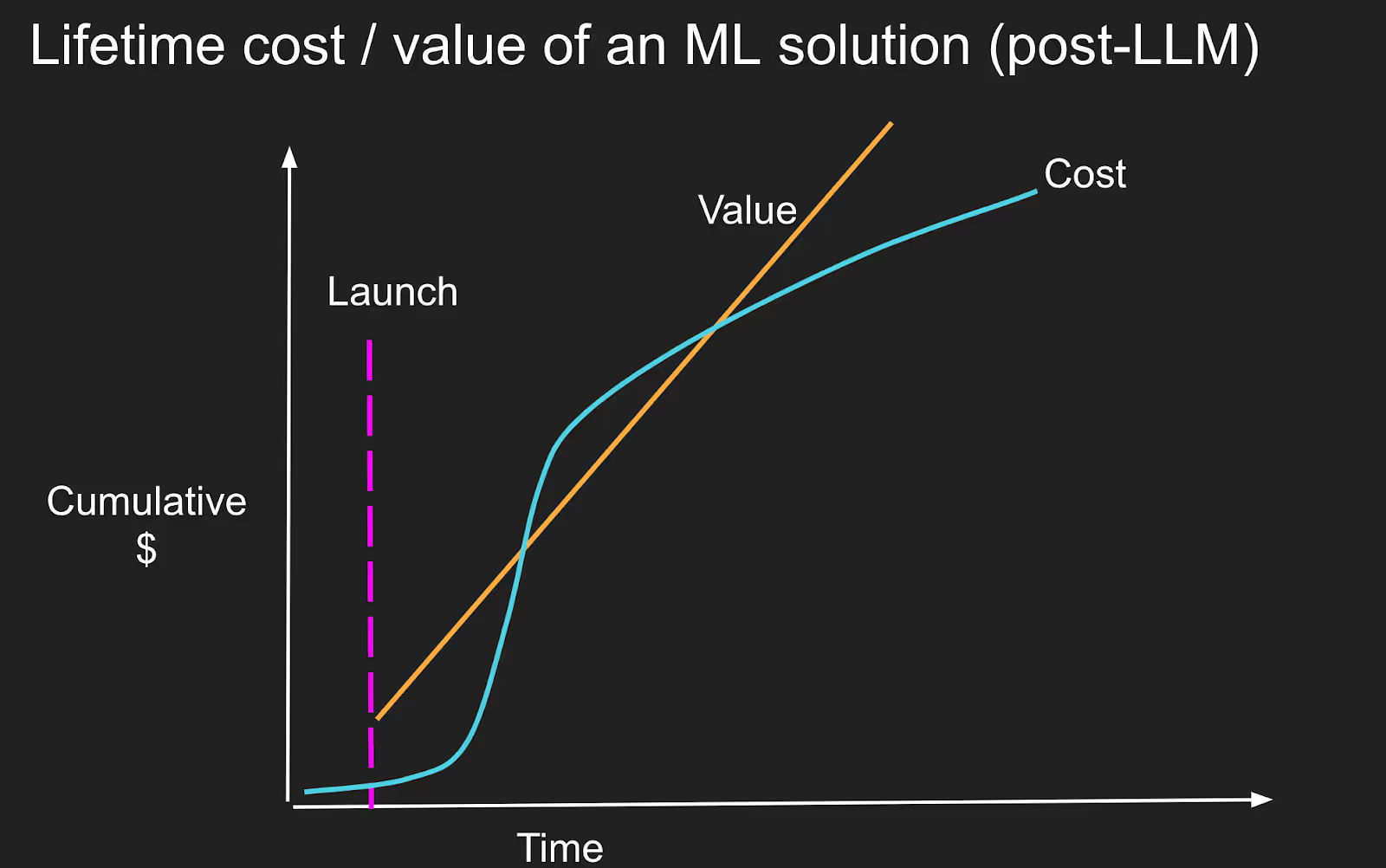Nirmal Mukhi and Michael Griffiths

Nirmal Mukhi leads the AI Engineering team at ASAPP, where he builds machine learning capabilities and products.Prior to joining ASAPP, Nirmal held leadership positions in engineering and research at IBM, where he was R&D lead for Watson Education, and served as CTO at fast-growing startup. He has over 30 publications (with 4500+ citations), 15 patents, and has appeared on a Discovery channel documentary about AI.
Michael Griffiths is a data scientist at ASAPP. He works to identify opportunities to improve the customer and agent experience. Prior to ASAPP, Michael spent time in advertising, ecommerce, and management consulting.
Building enterprise-grade AI solutions for CX in a post-LLM world
The advent of commercially available cloud-hosted large language models (LLMs) such as OpenAI’s GPT-4o and Anthropic’s Claude family of models has completely changed how we solve business problems using machine learning. Large pre-trained models produce state-of-the-art results on many typical natural language processing (NLP) tasks such as question answering or summarization out-of-the-box. Agentic AI systems built on top of these LLMs incorporate tool usage and allow LLMs to perform goal-directed tasks and manipulate data autonomously, for example by using APIs to connect to the company knowledge base, or querying databases.
The extension of these powerful capabilities to audio and video has already started, and will endow these models with the ability to make inferences or generate multi-modal output (produce responses not only in text, but also audio, image, and video) based on complex, multi-modal input. As massive as these models are, the cost and the time it takes to produce outputs is decreasing rapidly, and this trend is expected to continue.
While the barrier to entry is now much lower, applying AI across an enterprise is no straightforward task. It’s necessary to consider hidden costs and risks involved in managing such solutions for the long-term. In this article, we will explore the challenges and considerations involved in building your own enterprise-grade AI solutions using LLMs, and look at a contact center example.
The first step of a long journey
LLMs have served to raise the level of abstraction at which AI practitioners can create solutions. Tremendously so. Problems that took immense time, skill, experience and effort to solve using machine learning (ML) are now trivial to solve on a laptop. This makes it tempting to think of the authoring of a prompt as being equivalent to the development of a feature, replacing the prior complex and time-consuming development process.

However, showing that something can be done isn’t quite the same as a production-worthy, scalable solution to a business problem.
For one, how do you know you have solved the problem? It is common practice to create a high-quality dataset for training and evaluating the model. While the creation of such a benchmark takes time and effort, it is standard practice. Since LLMs come pretrained, such a dataset is no longer needed for training. Impressive looking results can be obtained with little effort - but without anchoring results to data, the actual performance is unknown.
Creating the evaluation methodology for a generative model is much harder because the potential output space is tremendous. In addition, evaluation of output is much more subjective. These problems can be addressed, for example, using techniques such as “LLM as a judge”, but the evaluation becomes a demanding task - as the evaluator itself becomes a component to build, tune and maintain.
The need to continuously monitor quality requires the creation of complex data pipelines to sample model outputs from a production system, sending these to a specialized evaluation system, and tracking the scores. The method for sampling data - such as the data distribution desired, the adjustment of the sampling frequency so that it is appropriate (sampling and measuring quality often on a large amount of data may give more confidence in the quality, but would be expensive), considerations around protecting data in transit and retaining it based on policies all add to the complexity. In addition, the instructions for scoring, interpretation of the scores, type of LLM used for scoring, type of input data and so on can all change often.
A fantastic-looking prototype or demo running on a laptop is very promising, but it is the first step in a long journey that allows you to be assured of the quality of the models’ outputs in a production system.

In effect, the real work of preparing and annotating data to create a reliable evaluation takes place after the development of the initial prompt that shows promising results.
- Nirmal Mukhi, VP AI Engineering

Safety considerations
The generality and power of LLMs is a double-edged sword. Ultimately, they are models that predict and generate the text that, based on the huge amount of pre-trained data they have been exposed to, best matches the context and instructions they are given - they will “do their best” to produce an answer. But they don’t have any in-built notion of confidence or accuracy.
They can hallucinate, that is, generate outputs that make completely baseless claims not supported by the provided context. Some hallucinations could be harmless, while others could have detrimental consequences and can risk damaging the brand.
Hallucinations can be minimized with clever system design and by following the best practices in prompting (instructions to the LLM). But the chances of hallucinating are always non-zero; it is a fundamental limitation of how LLMs work. Hence, it becomes imperative to monitor them, and continuously attempt to improve the hallucination prevention approach, whatever that may be.
Beyond hallucinations, since LLMs can do so many things, getting them to “stay on script” when solving a problem can be challenging. An LLM being used to answer questions about insurance policies could also answer questions about Newton’s laws - and constraining it to a domain is akin to teaching an elephant to balance on a tightrope. It’s trying to limit an immensely powerful tool to narrow its focus to one problem, such as the customer query that they need to resolve right in front of them.
One solution to these problems is to fine-tune an LLM so that it is “better behaved” at solving a specific problem. The process of fine-tuning involves collecting high-quality data that allows the model to be trained to follow specific behaviors, following techniques such as few-shot learning, or Reinforcement Learning with Human Feedback (RLHF). Doing so however takes specialized skills: even assembling an appropriate dataset can be challenging; ideally, fine-tuning would be a periodic if not continuous process - and this is difficult to achieve. Thus, managing a large number of fine-tuned models and keeping them up to date will require specialized skills, expertise, and resources.
Inherent Limitations
While LLMs can do amazing things, they cannot do everything. Their reasoning and math capabilities can fail. Even a task like text matching can be hard to get right with an LLM (or at any rate can be much more easily and reliably solved with a regular expression matcher). So they aren’t always the right tool to use, even for NLP problems. These issues are inherent to how LLMs work. They are probabilistic systems that are optimized for generating a sequence of words, and are thus ill-suited for tasks that are completely deterministic.
Sophisticated prompting techniques can be designed to work around some of these limitations. Another approach is to attempt to solve a multi-step problem that involves complex reasoning using agentic orchestration. A different approach would allow for a model pipeline where tasks suited to being solved using LLMs are routed to LLMs, while tasks suited to being solved via a deterministic system or regular expression matcher are routed to other models. Identifying and designing for these situations is a requirement to support a diversity of use cases.
Managing and running production systems
While vendors like OpenAI and Anthropic have made LLMs relatively cheap to run, they still use complex serving architecture and hardware. Many such LLM hosting platforms are still in beta, and typical service level agreements (SLAs), when supported, promise far below 99.99% availability (rarely guaranteed). This risk can be managed by adding fallbacks and other mechanisms, and represents additional effort to build a production system.
And, in the end, building on LLMs is all software development and needs to follow standard software development processes. An LLM or even just a prompt is an artifact that has to be authored, evaluated, versioned, and released carefully just like any software artifact or ML model. You need observability, the ability to conduct experiments, auditability and so on. While this is all fairly standard, the discipline of MLOps introduces an additional layer of complexity because of the need to continuously monitor and tune for safety (including security concerns like prompt injection) and hallucinations. Additional resources need to be made available to handle such tasks.
A contact center example
Consider the problem of offering conversation summarization for all your conversations with customers, across voice and digital channels. The NLP problem to be solved here, that of abstractive summarization on multi-participant conversations with a potentially large number of turns, was difficult to solve as recently as 2021. Now, it is trivial to address using LLMs - writing a suitable prompt for an LLM to produce a summary that superficially looks high quality is easy.
But how good would the generated summaries be at scale as an enterprise solution? It is possible that the LLM might hallucinate and generate summaries that could include completely fictitious information that’s not easily discerned from the conversation itself. But would that happen 1% of the time, or 0.001% of the time…and how harmful would those hallucinations be? Adding the actual number of interactions into consideration, a 1% rate could mean 1 customer interaction out of 100, but as you scale up the interactions you could suddenly be faced with 1000 customers out of 100,000 interactions. Evaluating the quality of the prompt, and optimizing it, would require the creation of an evaluation dataset. Detecting hallucinations and classifying them into different categories so that they can be mitigated would take extra effort - and preventing or at least minimizing the chances that they occur, even more so.
Summarization could be solved using just about any good LLM - but which one would provide the best balance between cost and quality? That’s not a simple question to answer - it would require the availability of an evaluation dataset, followed by a lot of trials with different models and applications of prompt optimization.
A one-size-fits-all summary output rarely meets the needs of an enterprise. For example, the line of business responsible for handling customer care may want the summary to explicitly include details on any promised follow-up in the case of a complaint. The line of business responsible for sales may want to include information about promotions offered or whether the customer purchased the product or service, and so on. Serving these requirements would mean managing intricate configurations down to having different prompts to serve different use cases, or ideally fine-tuned LLMs that better serve the specific needs of these businesses. These requirements may change often, and so would need for versioning, change management and careful rollouts.
Summary quality would need to be monitored, and as changes in technology (such as improvements in models, inference servers or hardware) occur, things would need to be updated. Consider the availability of a new LLM that is launched with a lot of buzz in the industry. It would have to be evaluated to determine its effectiveness at summarization of the sort you are doing - which would mean updating the various prompts underlying the system, and checking this model’s output against the evaluation dataset, itself compiled from samples of data from a variety of use cases. Let’s say that it appears to produce higher quality summaries at a lower price on the evaluation dataset, and a decision is taken to roll it into production. This would have to be monitored and the expected boost in performance and reduction in price verified. In case something does go wrong (say it is cheaper and better…but takes unacceptably long and customers complain about the latency of producing summaries), it would need to be rolled back.
What about feedback loops? Perhaps summaries could be rated, or they could be edited. Edited summaries or highly rated ones could be used to fine tune a model to improve performance or lower cost by moving to a smaller, fine-tuned model.
This is not an exhaustive list of considerations - and this example is only about summarization, which is a ubiquitous, commodity capability in the LLM world. More complex use cases requiring agentic orchestration with far more sophisticated prompting techniques require more thought and effort to deploy responsibly.
Conclusions
Pre-trained foundational large language models have changed the paradigm of how ML solutions are built. But, as always, there’s no free lunch. Enterprises attempting to build from scratch using LLMs have to account for the total lifetime cost of maintaining such a solution from a business standpoint.

There is a point early in the deployment of an LLM-based solution where things look great - hallucinations haven’t been noticed, edge cases haven’t been encountered, and the value being derived is significant. However, this can lead to a false confidence, and under-investing at this stage is a dangerous fallacy. Without sufficient continued investment, the risk of having this solution in production without the necessary fallbacks, safeguards and flexibility will be an ever-present non-linear risk. Going beyond prototyping is therefore harder than it might seem.
An apt analogy is architecting a data center. Purchasing commodity hardware, and using open source software for running servers, managing clusters, setting up virtualization, and so on are all possible. But putting that package together and maintaining it for the long haul is enough of a burden that enterprises would prefer to use public cloud providers in most cases.
Similarly, when choosing whether to build AI solutions or partner with vendors who have the experience deploying enterprise solutions, organizations should be clear-eyed about the choices they are making, understand the long-term costs and the tradeoff associated with them.




.jpg)


.jpg)




